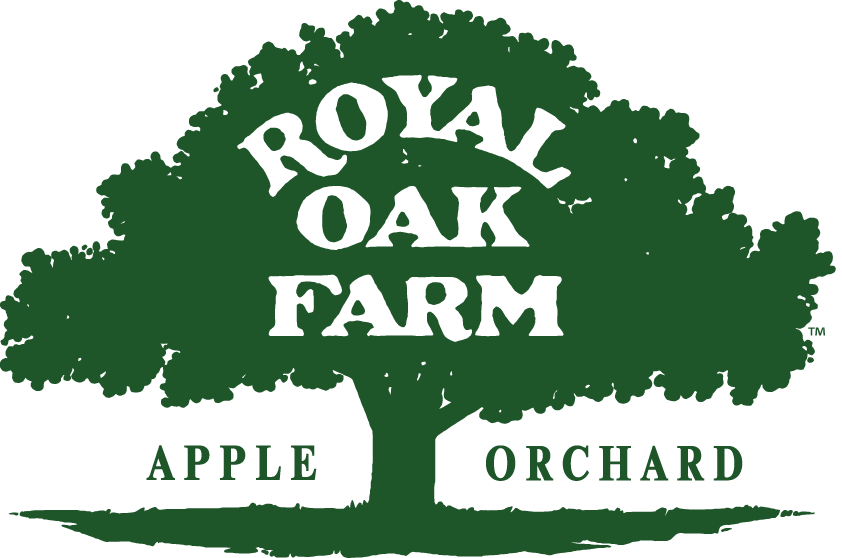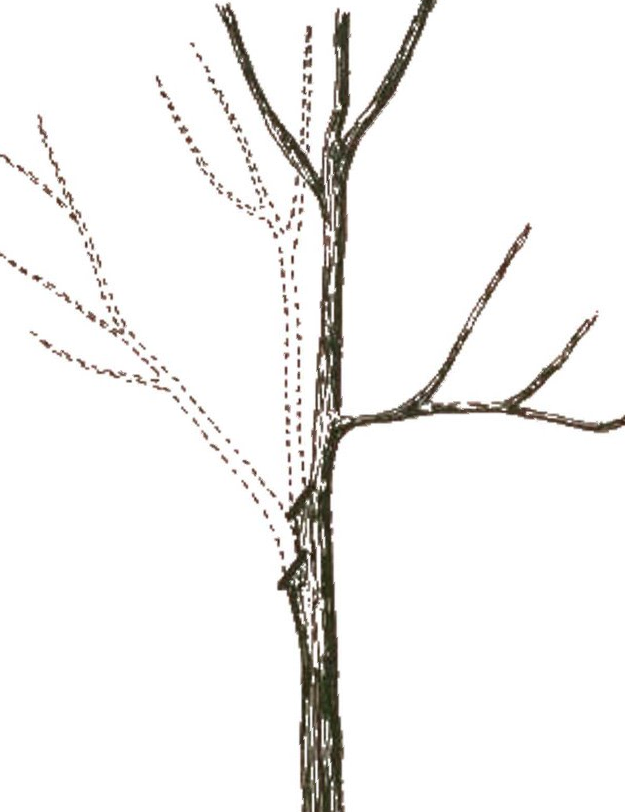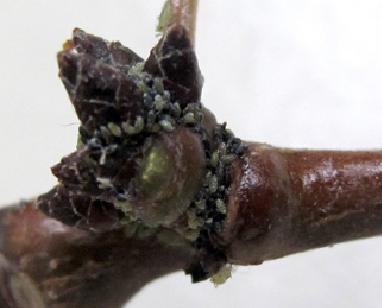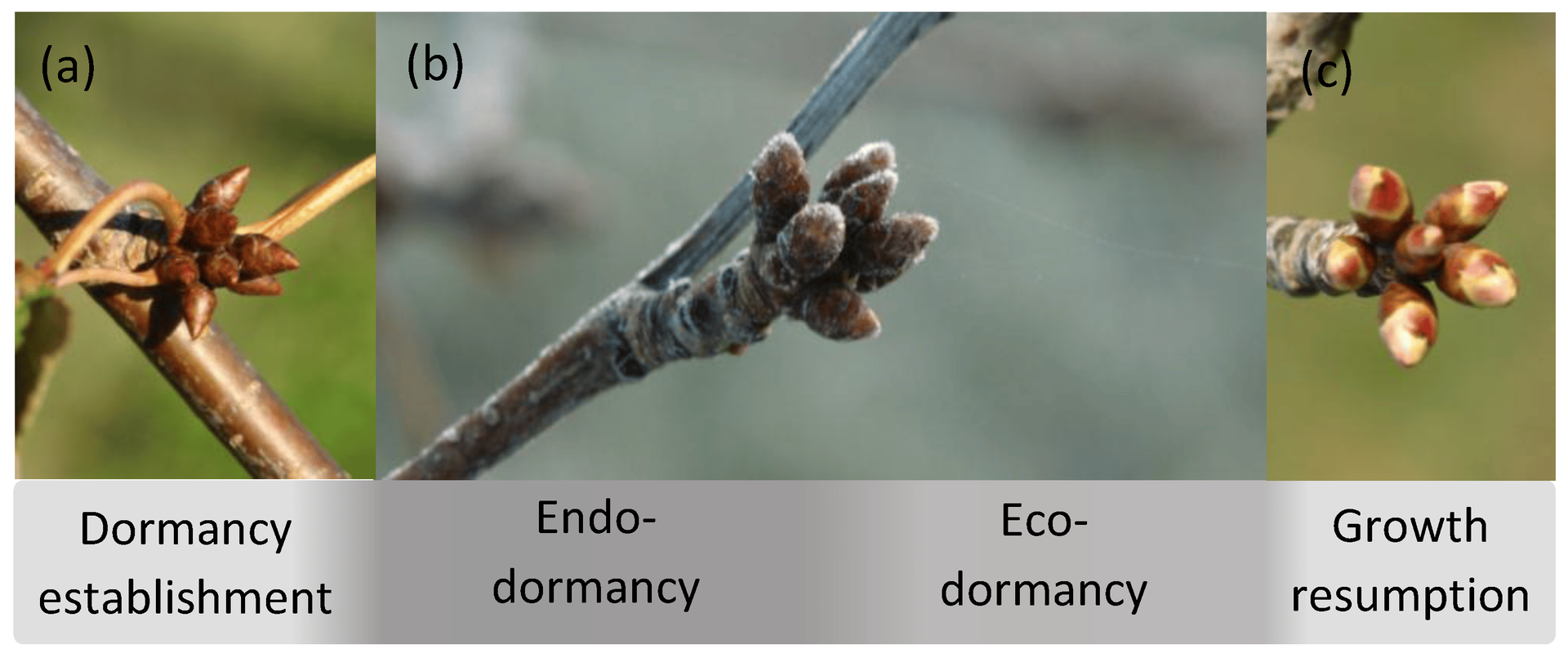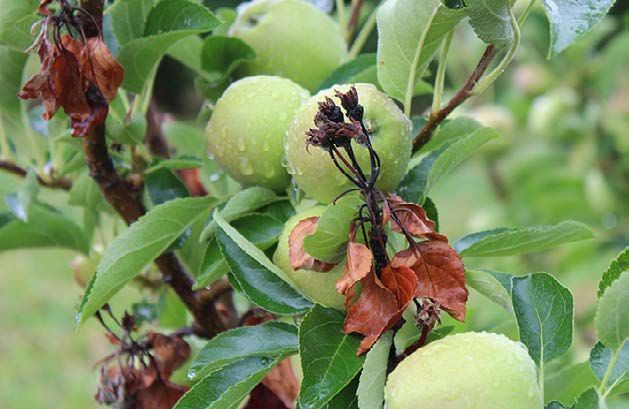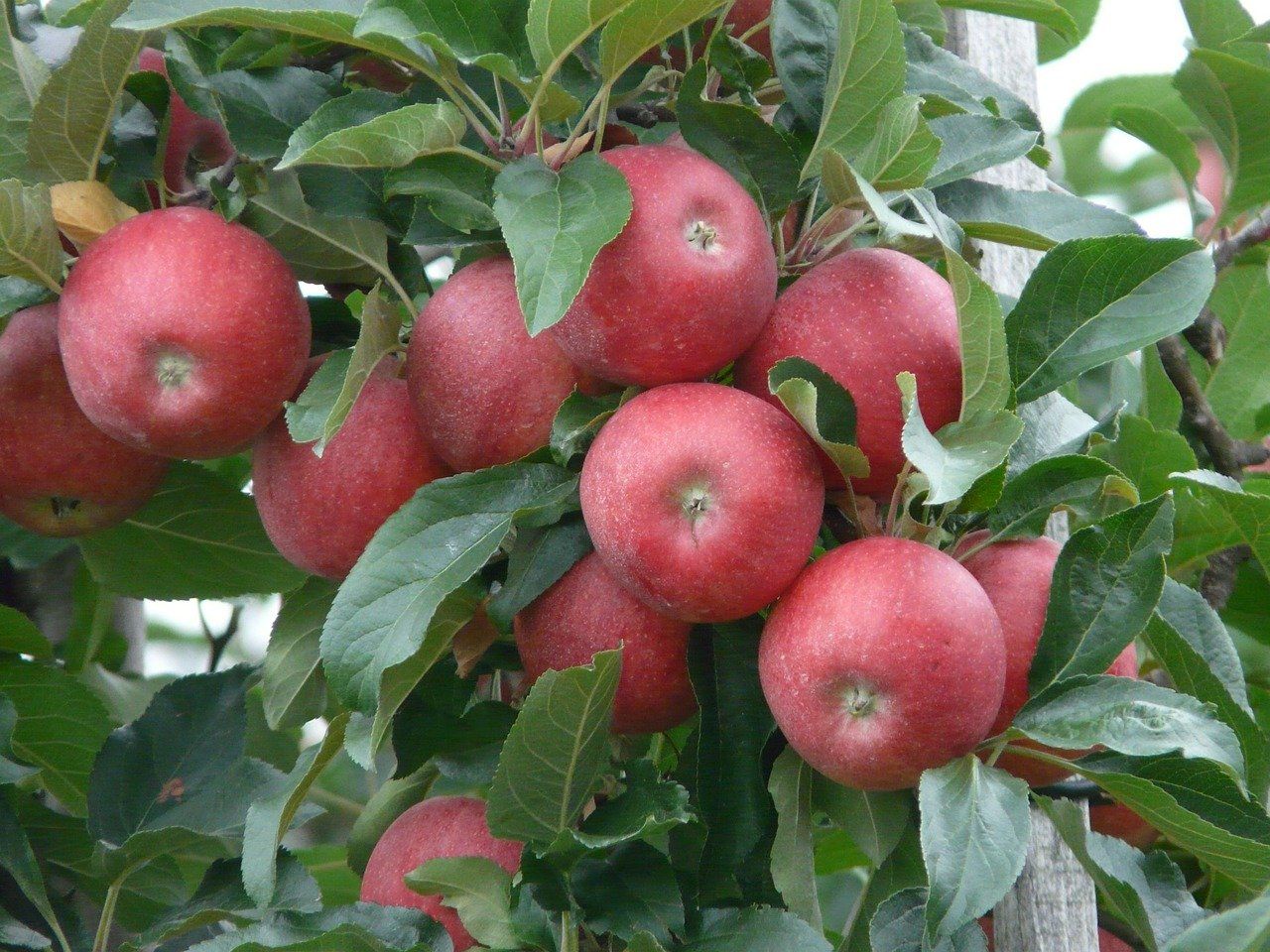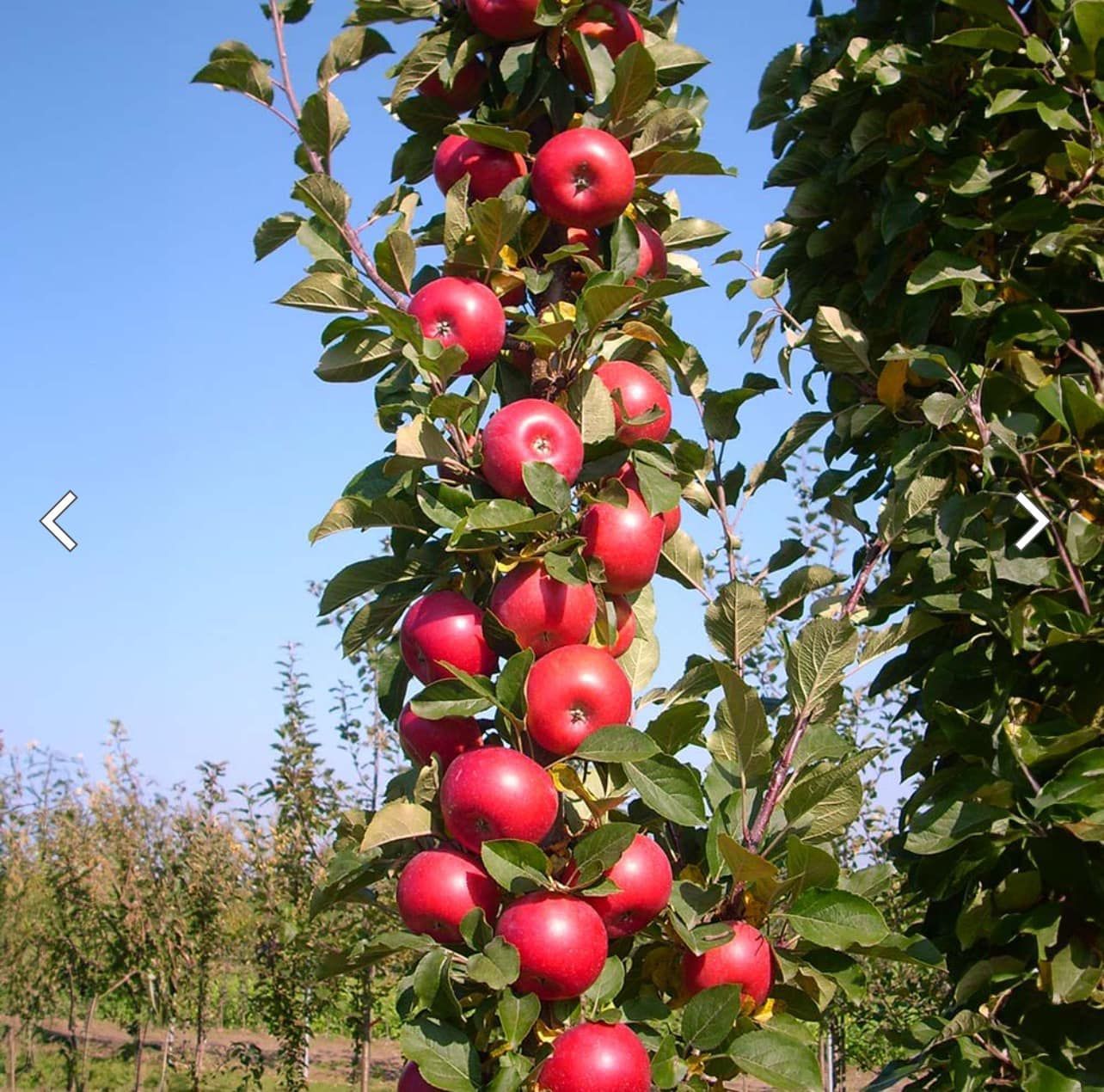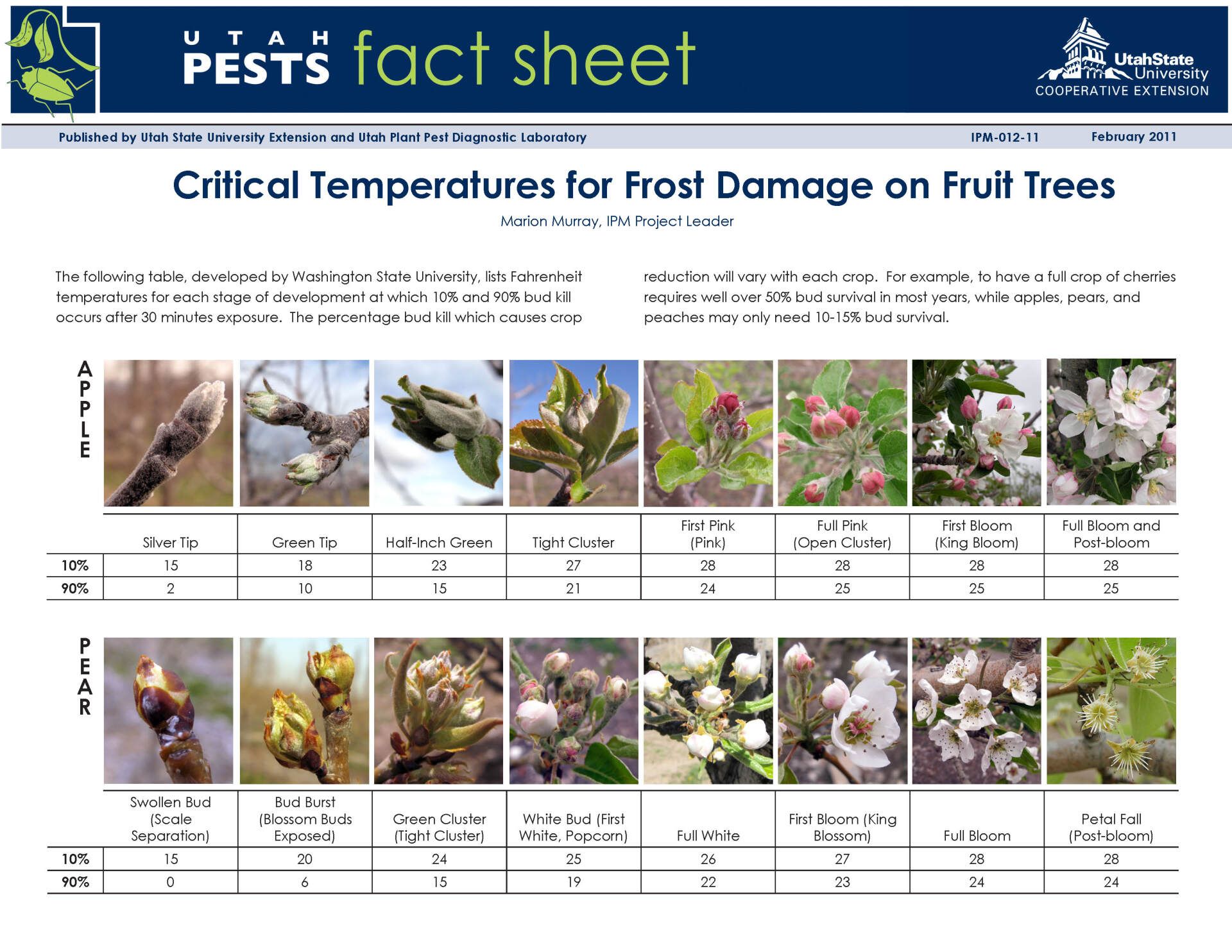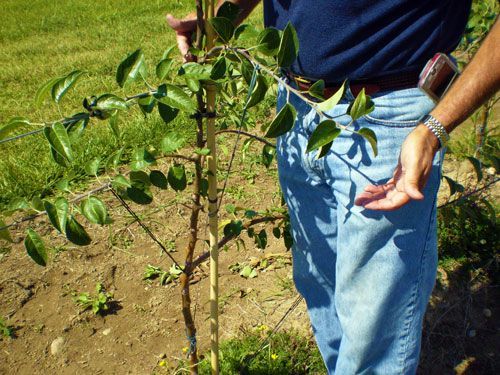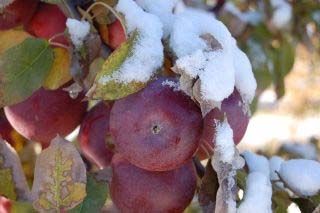Pruning the Home Apple Orchard
Proper Pruning
A properly pruned and trained tree lives longer and produces larger yields
of better quality fruit. As a general rule, pruning should be done before the tree
blooms in early spring when all danger of frost is past. An exception is sweet
cherry trees, which are usually pruned in August because there is less danger of
bacterial infection.
Fruit trees can be trained to either an “open center” or to a “central leader”
(see illustration on page 3). Fully dwarfed apples, standard and dwarf
pear trees should be trained to a central leader. Semi-dwarf apple trees may be
trained to either a central leader or an open-center crown. Standard apples,
sweet cherries, peaches and plum trees should all be trained to the open-center
system.
One-year-old apple trees are usually unbranched whips. Prune the top at
planting to the height at which the lowest limbs are wanted, usually about 30 inches. Pruning the top stimulates the growth of side branches.
Two-year-old apple trees often have several side branches. Prune them to
a central leader and cut back the side branches to about one-half of their original
length. Remove any broken branches and any that form an angel less than
45 degrees with the trunk. To increase production, keep the pruning as light as
possible the first few years. Two-year-old trees often have large limbs growing low on the trunk. When these are removed, the tree is essentially girdled. Thus, it is a good procedure to reduce the branch to a 4-6 inch “stub”; remove the stubs a year or two later.
Maintenance the first few years after planting includes the removal of
diseased, broken, or insect-injured branches and any “water sprouts” not
needed to replace other limbs.
Remove branches which make very narrow angles with the main trunk while the tree is young. If allowed to grow to a productive age, such limbs usually break out, often splitting the entire tree. (WSU Extension Bulletin)
OPEN CENTER
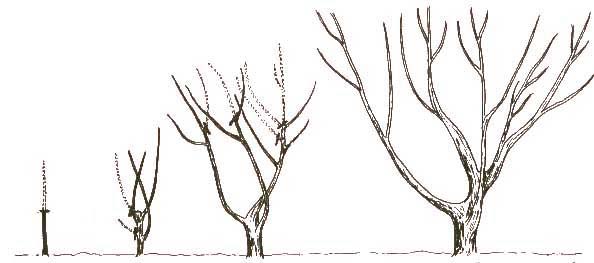
To train trees to an open center, choose two, three, or four shoots to form main scaffold branches the first winter. Remove or severely head all others. Choose one or two more the second season. Scaffold branches should be at least 8 inches apart on the trunk for a strong tree structure. Four main scaffold limbs evenly distributed around the trunk are enough; a fifth limb crowds. (Washington State University Extension Bulletin)
CENTRAL LEADER

To train trees to a central leader, choose a vigorous shoot high on the tree the first winter after planting. Cut off the top inch to stimulate branching if it is 2 feet long or longer. Head all other vigorous shoots more severely. Repeat the process in the following two seasons so that no side branches become vigorous enough to compete with the central leader. (Washington State University Extension Bulletin)
When large limbs are to be removed, first reduce them to a 6-8 inch stub and then remove the stub. Make the first cut about one-half way through the underside of the limb and approximately 8 inches from the main trunk. Complete the cut from the top side (about 6 inches from the trunk) and then remove the stub by sawing it flush with the trunk from the top side. It is not necessary to use wound dressings on any size wounds. In fact, recent research indicates that such dressings are often more harmful than beneficial.
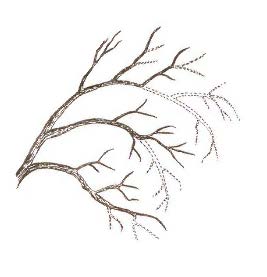
Thin out more shoots toward the end of a well-pruned branch in a mature tree. This will increase fruit size and quality on the remaining shoots. (Washington State University Extension Bulletin)
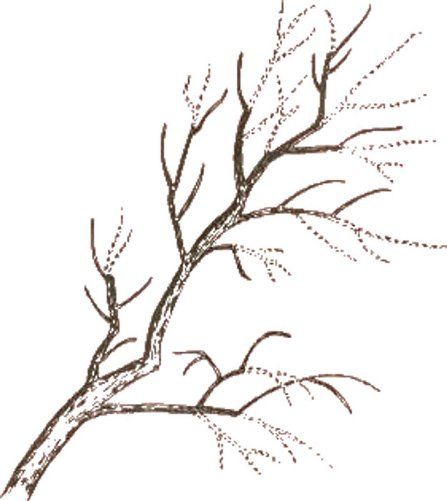
To maintain fruitfulness of lower limbs, cut upper limbs back to more upright branches. (Washington State University Extension Bulletin)
For a more detailed illustration of pruning techniques and a year by year diagram, you can download "Pruning Open Center and Central Leader Trees" in PDF format.
For detailed instructions on the concept of Renewal pruning, you can download this instructional article "The 1-2-3 Rule for Renewal Pruning" by Bas van den Ende who was a research scientist with the Victorian Department of Agriculture, Australia, for 30 years, specializing in the management and production of fruit trees.
Backyard Orchard Management @ Royal Oak Farm Orchard
Backyard Orchard Management @ Royal Oak Farm Orchard is a blog for the home fruit tree grower providing information about fruit tree management, fruit tree pruning & training and Integrated Pest Management from the IPM Specialist and Certified Nurseryman at Royal Oak Farm Orchard, a 22,000 tree apple orchard and agri-tourism operation located in Harvard, Illinois.
Click or tap any title to read that post.

